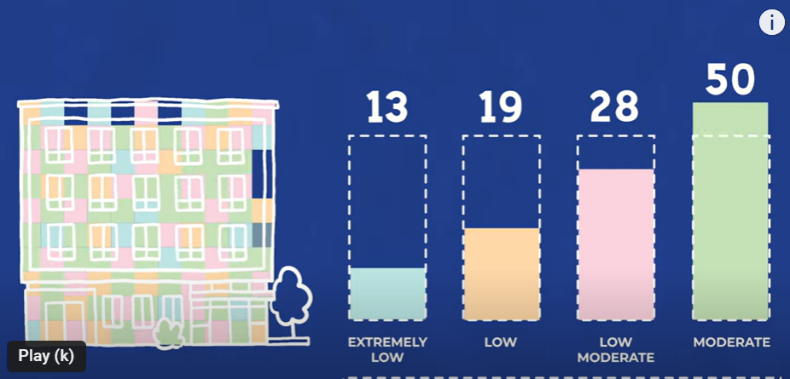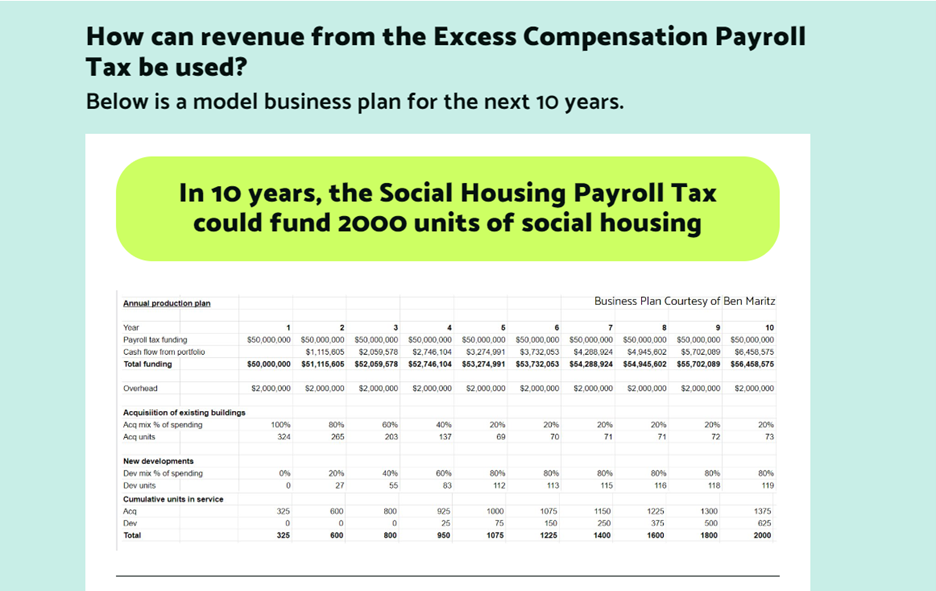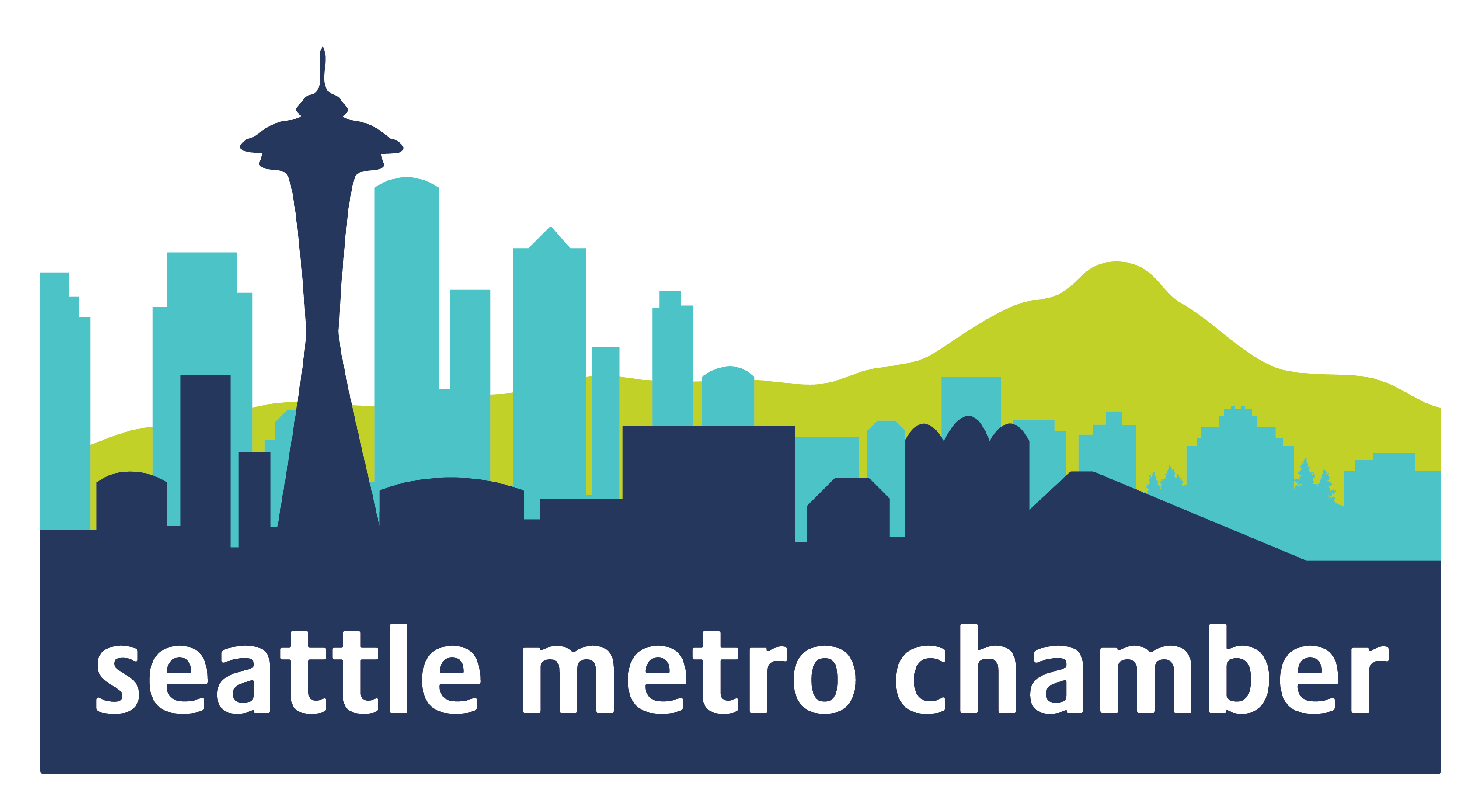Seattle Social Housing Developer Facts
Overview: PDA Board and Chamber Communications
The Seattle Metro Chamber first attempted to contact the Seattle Social Housing Public Development Authority Board (PDA Board) on Jan 16, 2024. Since then, the Chamber has been in correspondence with the PDA Board’s Secretary, Katie LeBret and Chair Kaileah Baldwin.
The Chamber also submitted a Public Records Request (PRR) with the PDA Board on Feb 9, 2024. The Chamber did not receive an acknowledgement of the PRR until Feb 22, did not receive an expected timeline until Mar 25, and to date has not received substantial records.
The Chamber sent correspondence written by legal counsel to the PDA Board on March 18, outlining concerns regarding their lack of proper response to the Chamber’s PRR and general failure to comply with Washington’s Open Public Meeting Act.
The PDA Board’s meeting minutes up until February 2024 can be found at socialhousingseattle.org. Note that meeting minutes are sparse, seldom longer than 3 pages, for meetings that regularly last up to two and a half hours. The PDA hired a CEO in summer of 2024, Roberto Jimenz, moving up from Sacremento. Items from note from meeting minutes and the Chamber’s notes include:
- In October of 2023, the group received a presentation on the Seattle Solidarity Budget and discussed endorsing both that and the Seattle Housing Levy.
- In February of 2204, the group invited Tiffani McCoy from House our Neighbors (HON) to describe the difference between HON and the PDA. During her presentation, she asked Board members to either adopt their financial plan or come up with their own and suggested that doing so would help the campaign navigate some criticism they have received about their plans being hypothetical.
General concerns about the PDA can be found in our legal counsel’s letter. Please see concerns highlighted below:
- The PDA Board did not appropriately respond to the Chamber’s Public Records Request.
- The PDA Board does not record their meetings for public review.
- Until February or March of this year, the PDA Board did not have a website with meeting information nor past meeting minutes.
- Until February or March of this year, the PDA Board did not have board members’ contact information available to the public.
- Board meeting minutes are sparse and confusing.
Timeline: Chamber Communications with PDA Board
Jan 16:
- Lilly Hayward (Seattle Chamber) emails DON_SRC_Liaison@seattle.gov to inquire about meeting minutes and recordings.
- DON Liaison responds and connects Lilly to Devyn Forschmiedt and Dawn on the PDA Board
Jan 24: No response from Devyn and Dawn; Lilly sends follow-up email.
Jan 24: Zach Frimmel from the Renters’ Commission responds and loops in Kaileah Baldwin, PDA Board Chair.
Jan 25:
- Katie LeBret emails Lilly and asks how best to share the minutes and offers to share 2024 minutes moving forward.
- Lilly asks if there is a website that holds the materials.
- Katie responds and says that there is no website, although the Board hopes it will be running by the next board meeting.
Jan 28: Katie sends the Board materials for May 2023 through January 2024
Feb 8:
- Lilly emails Katie to ask for recordings, documents related to I-136, authority’s expenditures, name & contact of leadership.
- Katie responds and confirms that meetings are not recorded and there is currently no CEO or CFO. She says that the next PDA Board meeting is Thursday the 21st.
- Lilly responds and asks if there is leadership other than the CEO & CFO and asks when to expect other requested materials.
- Katie responds and loops in Kaileah Baldwin (Board Chair) and Tom Barnard (Board Vice Chair).
Feb 9: Lilly submits an official Public Records Request and includes the Department of Neighborhoods (DON), Katie, Tom, and Kaileah from the PDA Board, as well as Lars Erickson from the Seattle Chamber and Scott Lindsay from the City Attorney’s office.
Feb 15: Lilly emails Katie to confirm February meeting time, get link. Katie responds promptly.
Feb 19: Lilly asks Katie for February meeting minutes.
Feb 22:
- No response, Lilly elevates request and loops in Kaileah Baldwin.
- Kaileah responds and says that records related to I-137 do not exist; refers Lilly to House our Neighbors website.
- Katie provides minutes.
Feb 27: Lilly responds to clarify expectations of the PRR.
March 11: Kaileah responds with information related to the PRR.
March 18: Lars sends letter from Lane Powell
March 25: Kaileah responds with contracts and screenshots from a conversation with House Our Neighbors
March 29: Kaileah informs SMCC that materials will be delayed by a day
March 30: Kaileah sends a zip file with meeting minutes and materials.
May 5: Lars responds to ask when to expect further records.
Overview: Initiative 137 Concerns
Who is this housing for?
- Initiative 135 advertised social housing as a system that while supporting middle-income earners, would also provide housing for the unhoused and/or very poor: those who make between 0-30% AMI. See the graphic below, pulled from HON’s 135 website. It lays out the disproportionate number of extremely low income and low income people who are rent burdened (paying more than 30% of their income on rent). This graphic doesn’t explicitly promise that this need will be met with equivalent allocation of social housing units. However, its display on the I- 135 website implies that the initiative will be addressing this need.
- HON also shared a video called “How is Social Housing Paid for?” that presents a sample social housing building in which about 12% of units are reserved for those making between 0-30% AMI. While still a small proportion of units, it is more than what HON proposes is likely today.
HON’s current AMI proposal suggests that only 3% of units – and only studios—will be reserved for Seattle’s poorest residents. This “bait and switch” is misleading to voters, as the allocation promised today does very little to ease the cost burden on the poorest renters. - Meanwhile, HON estimates that over 60% of units will be reserved for those making between 60-80% AMI; 12% will be reserved for those making between 80-120% AMI.

Above: From I-135 Website | Below: From Video, “How is social housing paid for?”

How much housing will be built?
- We are in a housing supply crisis and with $50 million a year, HON estimates that the PDA will be able to build only 625 new units of housing over 10 years (see financial plans below).
- By way of comparison, the Seattle Housing Levy, which is just over 900 million, anticipates developing over 3,100 units of affordable housing in 7 years.
Below: From HON’s I-137 Website

How will this be paid for, and what happened between I-135 and I-137?
- During the Initiative 135 campaign, HON said that they would rely on capital grants, bond issuance, rent payments from higher income owners, and further bonding on rents to pay for social housing (see graphic below).
- They also explicitly said in campaign videos that “no government subsidy” would be required to pay for social housing (see graphic below).
Now, suddenly, social housing needs $50 million a year. What changed?

Above: From HON’s I-135 Website | Below: From “How is social housing paid for” video

